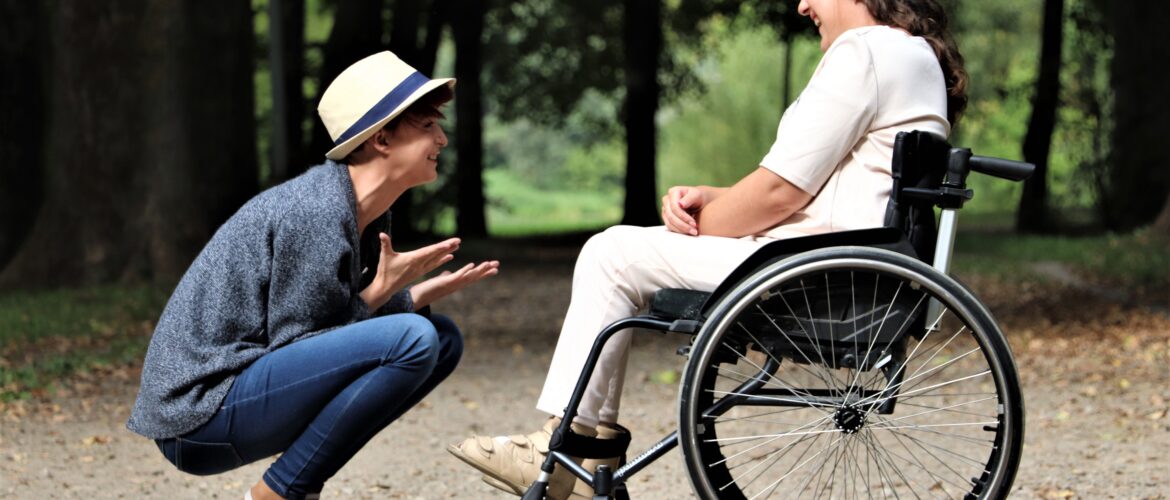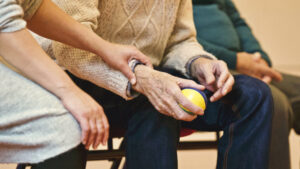Blog
The Barriers We Face
- July 27, 2020
- Posted by: Healthy Young NV
- Category: Teen Tween Young Adult

How hard is it for you to do everyday activities, such as playing basketball, going to your friend’s birthday party, or even going to school? Some of you reading this may be asking yourself what the relevance of this question is, as these are typically very easy to do. However, doing these everyday activities might not be easy for someone else.
Let’s take a look at my friend Brian, for example. Brian is a 15-year old, 10th grade student and likes to have fun with his friends in any way possible. However, Brian also has a physical disability, which impairs him from being able to stand or walk, making him have to use a wheelchair. This makes things even more complicated for Brian, as most of his school is not accessible for people with physical disabilities, on top of not being able to do the same activities his friends are able to do. There are actually no wheelchair ramps at Brian’s school, making getting around the campus extra difficult for him. Brian cannot play basketball with his friends, which always makes him feel left out. So, you might be asking, what can Brian do in order to do the activities he loves doing and make going to school easier for him, while having an equal amount of fun like his friends?
Brian is not the only person who experiences these difficulties. People with disabilities in the United States often face many obstacles like Brian does in their everyday activities. From the last paragraph, we can see Brian is most often facing physical barriers, which are manmade obstacles that prevent access for some people. For example, Brian’s school not having a wheelchair ramp is a physical barrier that is hard to overcome (CDC). However, physical barriers are not the only obstacles people with disabilities face in their day to day lives. There are also social barriers, as described below, which are quite often invisible to the average person since they do not go through them.
According to the CD website, people with disabilities are far less likely to be employed, less likely to have completed high school, and four times more likely to experience violence than people without disabilities. One other issue people with disabilities face are various stigmas that are brought upon them. Very often people with disabilities are seen as “helpless” or that they always need assistance with every single thing. Let’s look at Brian again – this time he is at the mall. A woman spots Brian going to the entrance and she opens the door for him quickly. Brian is clearly annoyed by this. You may be asking, “Why was Brian annoyed with someone trying to help him?” This is because people with disabilities are often seen as helpless, and people often try to assist them with everyday activities in which no help is needed. People with disabilities are human just the way you and I are, and enjoy the same things that someone who doesn’t have a disability enjoys.

Now you might be asking yourself, “How can we treat people with disabilities better?” The first step is continue educating yourself about issues people with disabilities face. Listen to what people with disabilities have to say, as this will help you have a better understanding of some of the issues people with disabilities may face. Also take into account that not all disabilities are physically visible! There are mental disabilities that can impact someone’s day to day life, such as anxiety, depression, and eating disorders, to name a few.
Another thing you can do is to be an advocate for policy changes that help people with disabilities have a better quality of life, such as advocating for more accessible options in public spaces. Although advocacy for accessibility still has a long way to go, there are many other ways you can help, such as volunteering at a local nonprofit organization that serves people with disabilities, as well as advocating and signing petitions that would help people with disabilities live a normal life among others. Some local organizations which directly help people living with disabilities are listed below:
This blog was written by Sahand, a volunteer with Immunize Nevada.
Resources
https://www.cdc.gov/ncbddd/disabilityandhealth/disability-barriers.html
